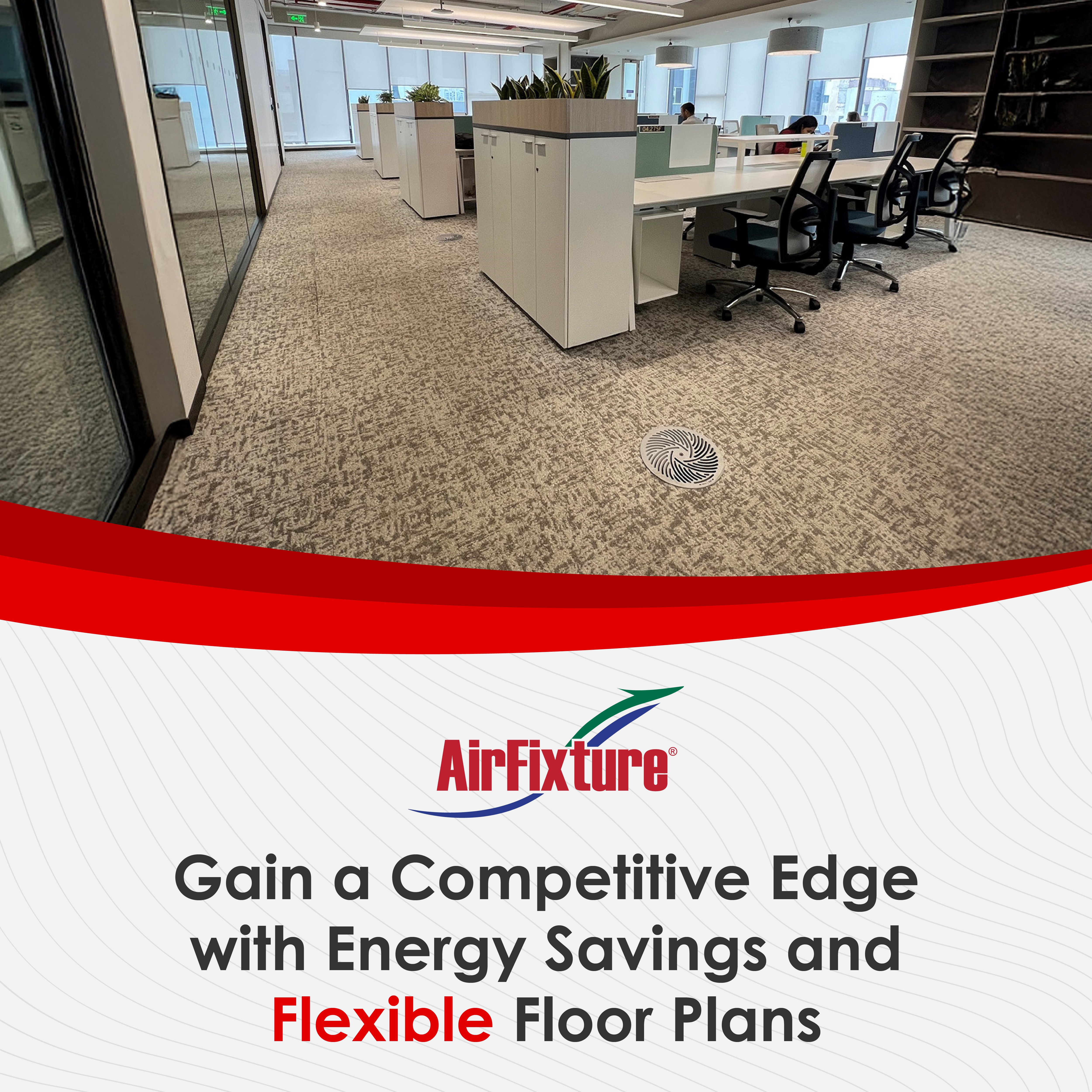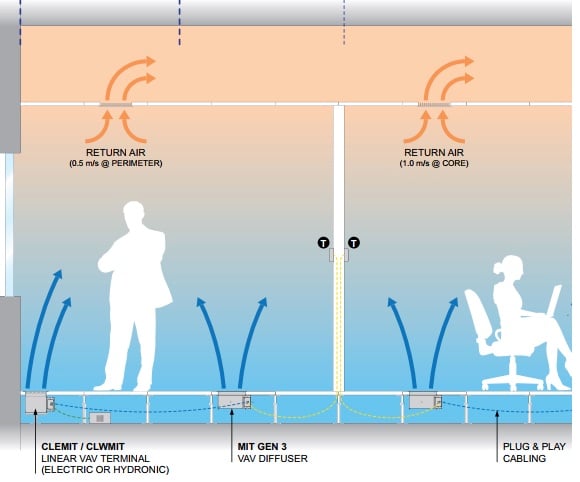What is the process of constructing a new commercial building?
Photo: Pixabay
Floor, wall and ceiling mounted to meet your unique project design.
3 min read
AirFixture : Mar 27, 2025 4:03:28 PM

Tenant improvement never ends. With companies looking to level-up their office space to attract top talent, better reflect their corporate brand and values, and display their company’s culture, premium tenants—the ones property owners and managers want to stick around—need the best options presented to them.
With its flexible layout, design-focused elements, sustainability, efficiency, and high-quality fresh air output, an underfloor air distribution (UFAD) solution to traditional HVAC with a raised access floor (RAF) gives tenants and property managers the best starting point to a successful office build out.
Successful lease negotiations go beyond square footage—they solve for potential problems before they keep companies from doing their best work. RAF and UFAD systems optimize your client's workspace and deliver cost-saving benefits, offering enhanced flexibility, energy efficiency, cost effectiveness and higher-quality indoor air for occupant comfort.
Flexibility: Raised access flooring allows for mechanical, electrical and HVAC installation that is out-of-sight and easily reconfigurable. It also gives architectural designers the opportunity to incorporate their aesthetic designs into different workspace types without having to configure essential building services in the design. RAF and UFAD also make it easier for tenants and property managers to plan for future changes to fit changing needs and trends.
Energy Efficiency: UFAD systems reduce energy consumption and lower operating costs, improving sustainability and cost-effectiveness over time. As an added plus, they are easily accessible, requiring minimal maintenance compared to traditional overhead heating systems.
Cost Effectiveness: UFAD systems are less expensive to buy, install, and maintain than traditional overhead HVAC systems. Contractors in the country's fastest-growing markets know how to price, install and maintain UFAD systems, allowing tenant improvement dollars to go further with the lower cost of RAF and UFAD installation.
Highest-Quality Indoor Air: Indoor air quality standards from governing bodies including the EPA and ASHRAE are consistently rising – and for good reason. Tenant spaces need to have constant clean, healthy air distributed through the entire office for worker safety and comfort. UFAD systems utilize diffusers that supply fresh air into the primary breathing zone. They also deliver more consistent temperature and humidity control leading to a healthier and more productive work environment and enhancing comfort.
In a May 2024 report from commercial real estate leader JLL, they found a number of factors that employees valued most following tenant improvement (TI) projects. Physical TI factors included air quality improvement, increased workspace choice, and collaborative workspaces.

Credit to JLL, Global Occupancy Planning Benchmarking Report May 2024
Air Quality: With better indoor air quality, employees are more satisfied at their workplace. This was one of the factors that led to the largest improvement in employee satisfaction.
Workspace Choice: Employees value having options throughout their day. TI projects that gave employees more options for their daily working space saw greater employee satisfaction.
Collaborative Workspaces: Study after study shows people want to work together. Creating engaging collaborative workspaces gives employees a better space to do just that.
Today's workforce values modern, comfortable, and collaborative workspaces. RAF & UFAD systems can help your clients create flexible layouts to give greater workspace diversity and improved air quality to raise employee satisfaction.
In a similar May 2024 report from JLL, they found a number of factors from tenant improvement projects that raised employee productivity. Physical TI factors were similar to those that drove employee satisfaction.

Credit to JLL, US and Canada Design Trends Costs Guide: The evolution of office design and cost for a flexible future
Choice of Workspace: The report showed that employees with more choices of workspaces were more productive throughout the day.
Air Quality: Similar to the increase in employee satisfaction, an increase in Air quality led to a major positive improvement in employee efficiency.
Thermal Comfort: Along with air quality, consistent and easy-to-modify climate-controlled air was a contributing factor to improved employee efficiency.
All these factors are served directly by introducing a UFAD system. From delivering high-quality climate-controlled air evenly throughout and office to allowing for easily configurable workspaces, RAF And UFAD are building blocks for improving employee efficiency.
Occupancy Comfort: Underfloor Air Distribution Systems eliminate hot and cold spots, improving occupancy comfort that leads to better employee satisfaction and productivity. UFAD achieves this with strategically placed diffusers, easy-to-use central controls, and consistent delivery of fresh air to the breathing zone.
Easy-to-Develop: RAD and UFAD allow for faster build times and better future planning and flexibility. The simple solution also allows architects to partner with mechanical and electrical contractors to get the most out of their design.
Cost-Effective: UFAD systems are more energy efficient than traditional overhead HVAC systems. This not only brings down operating costs over time but contributes to improved building sustainability—something that tenants and employees value more and more each year.
To learn how a UFAD system can help secure long-term premium tenants in your buildings, contact us at AirFixture today.
Photo: Pixabay

Architects and building designers face difficult decisions when developing a design for a new or retrofitted building. From ceiling heights to...
When you think of modern construction methods, many people think that steel and concrete make the strongest buildings. However, wood - specifically,...